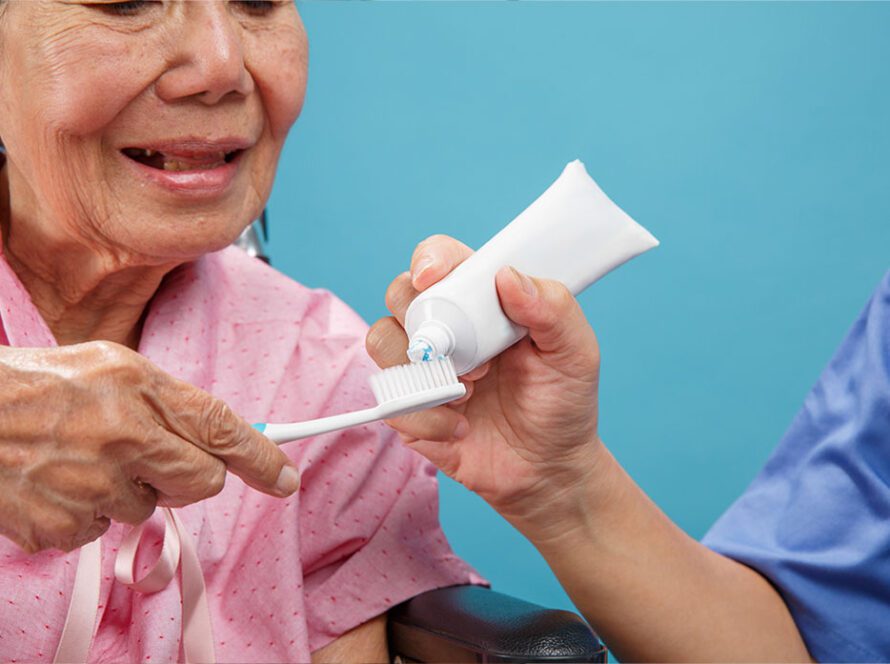OOne of the greatest difficulties in caring for someone with dementia are the behavior changes that can – and often do – occur. People living with dementia often behave in ways that can feel incredibly challenging, leaving us as caregivers bewildered and unsure how to respond..
Why do behaviors occur?
Behaviors are typically communication of a need. Dementia can damage the part of the brain that controls the person’s ability to express their needs, wants, discomfort or distress through words. What we see as anger, aggression, etc., is quite often physical, emotional, or environmental distress that the individual is trying to communicate, but is unable to do so.
What we see as anger, aggression, etc., is quite often physical, emotional, or environmental distress that the individual is trying to communicate, but is unable to do so.
How to respond to challenging behaviors
Discover the need.
When a challenging behavior occurs, the first thing you can do as a caregiver is try to discover the possible need, beginning with physical needs. Check for the following:
- Pain
- Illness
- Hunger/thirst
- Restroom needs
Quite often taking the person to the restroom, resolving pain, or giving them a snack/drink will alleviate the distress. If it does not, check for the following environmental needs:
- The individual feels too cold or too hot
- They are wearing clothing or shoes that are too tight, or uncomfortable
- The environment is loud/noisy
- Glares or shadows
People living with dementia have difficulty controlling their emotions or expressing them in a reasonable way and may be experiencing:
- Confusion
- Frustration with a task that feels too complicated
- Lonely/sad
- Fearful or anxious
- Angry or agitated
Behavior Basics
While every individual is unique, there are some basic guiding principles when responding to challenging behaviors.
Approach the individual in a calm, caring manner. Ensure they have seen you and you have connected with them before you touch them or enter their personal space. Touching someone with dementia when they haven’t seen you can startle them and escalate the behavior.
Don’t argue, correct or scold the individual. Remember, the behavior is not intention, it is communication of a need.
Join their reality. People living with dementia can be living in a reality very different than ours. They may be connected to a time frame in their early years. They may believe things that are not happening or see things that are not there. While your natural instinct may be to correct the person and try to drag them back into reality as you know it, it’s much more effective, comforting, and honoring to agree with them and validate their reality. While you don’t have to agree with the content that is being presented to you, you can agree that it is the individual’s truth – and validate their truth.
Agree with the person. Mirror back to them what they are saying. This will reassure the person that they have been heard and someone cares. “Yes, someone took your purse; I’m so sorry that happened” is far more effective than correcting them and saying, “You are imagining things, no one took your purse.”
Discover the need and meet the need. Check for physical, environmental, or emotional causes of distress and make the needed changes to restore the person to a feeling of calm and well-being.
Keep a behavior log. Try to identify possible triggers of behaviors and work towards prevention.
Use person-centered approaches; this means, knowing the person’s preferences, history, likes and dislikes – the things that calm them and the things that cause them distress.
Ways to prevent behaviors.
Although dementia related behaviors can’t be avoided altogether, there are things we can do to significantly lessen the frequency or severity.
Remain calm. Studies have shown that many behaviors could have been avoided by a using a calm, caring, and dementia aware approach. If you find yourself become frustrated, remove yourself from the situation.
Establish a daily routine that includes structured mealtimes, hydration, exercise and rest . By creating structure and predictability for the individual with dementia, you will minimize distress and ensure key needs are being met. Learn how to create a daily routine by clicking here.
Establish a restroom schedule. Guide the individual to the restroom every two hours. Not only will this lessen incontinence episodes – and therefore stress for you as a caregiver, but it will minimize discomfort and anxiety in the individual.
Maintain a calm environment. An environment that is loud or chaotic can quickly trigger a behavior. Learn more about creating a dementia aware environment by clicking here.
Reach out for support. Dementia is a challenging disease, and caregivers need the support of others who understand. Reach out for a support group in your area, or a virtual support group.


